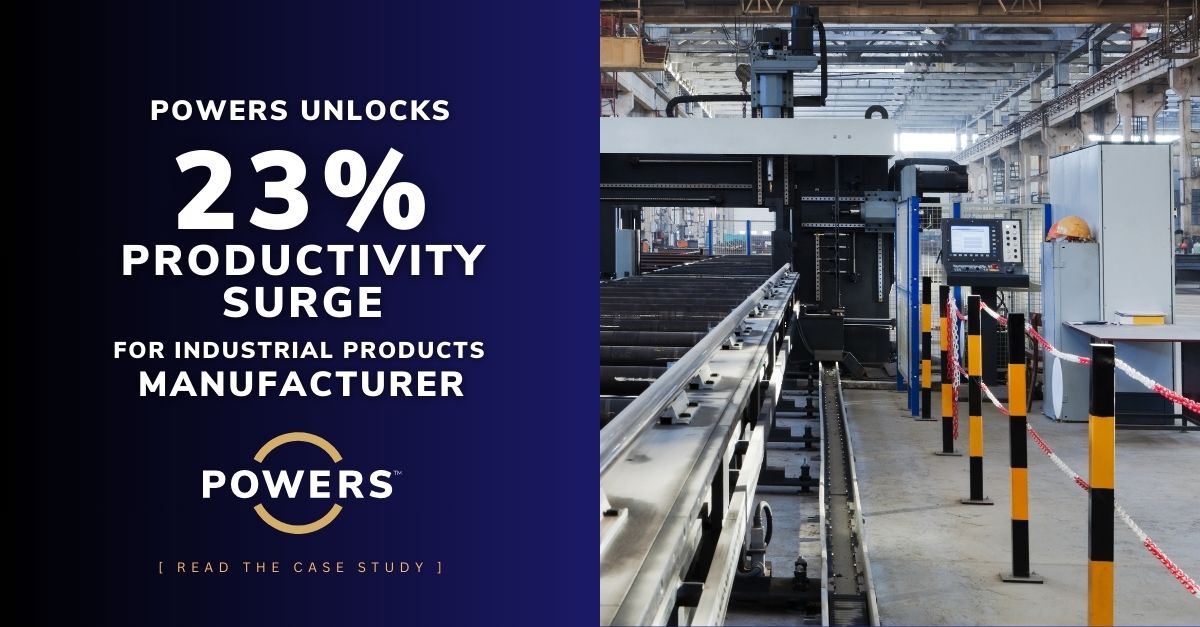
International Automaker
A multi-billion-dollar powerhouse automaker approached POWERS for help with their assembly facilities in the U.S. With a presence on every continent except Antarctica, this company relied on punctual, high-quality delivery from its Tier 1 and Tier 2 suppliers. Still, some suppliers were struggling to meet service level standards.
The automaker’s supply chain strategy was to source Tier 1 suppliers as geographically close to their assembly line facilities as possible to assist in reduced transportation costs and ensure on-time availability and response. This strategy also allowed for production flexibility to meet changing consumer demands as they arose.
With these strict requirements in place as a supplier, the automaker’s operations required a robust parts supply chain and sales and operations planning (S&OP) process to stay on task with sourcing lead times. Timely production flow was critical for predictable parts usage and coordinated logistics and shipping to feed the assembly plants.
It was up to each supplier to formulate and implement necessary improvements or risk losing the automaker’s business. The automaker enlisted POWERS to assist three specific suppliers that were producing interior headliners, interior carpeting and floor coverings, and fuel tank molding and assembly. Let’s look at the results of this engagement in greater detail.
T1 Supplier 1
Challanges
- Suppliers did not have the expertise to correct and implement permanent and sustainable solutions to meet performance standards.
- Suppliers ranked according to these risks, incurring high financial penalties if they missed delivery timelines or let quality standards slip. There were additional freight costs related to expediting parts when suppliers failed to deliver.
- Mass production was not feasible due to federally mandated safety protocols.
- Finished goods warehousing, sorting, and sequencing for truck loading was a nightmare due to direct ties to the auto assembly lines. Options such as color, capacity, size, and style of vehicle dictated the sequence of parts production; however, parts also needed to be packaged and loaded for transport in reverse order to ensure that the first off the truck would also be first needed on the assembly line.
- Lack of an internal existing forecasting model or system. This created a chaotic internal warehouse storage challenge which resulted in long delays on the line waiting for movers to locate needed line parts. It also bred extremely unsafe practices, unneeded product moves, extra warehouse staffing, missed shipments, and inaccurate inventory reporting.
- Lack of robust sourcing system usage and knowledge and, as a result, the expediting of subassemblies and parts which constantly cost the supplier thousands of dollars weekly for expedited freight, including the need to all-too-frequently charter private transportation of parts from overseas suppliers.
- High turnover within the purchasing/planning and scheduling department, which caused a loss of “tribal knowledge.”
Strategies
- Set up of EDI interfaces and management of customer ordering data
- Conversion of customer orders into production schedules
- Conversion of production schedules into component demand and communication to vendors
- Management of incoming components
- Warehousing optimization (layout/processes/systems) for off-site satellite warehouse
- Replenishment processes from satellite warehouse to production facility
- Delivery process to each workstation (no stoppages)
- Warehousing optimization (layout/processes/systems)
- Flow of WIP/finished goods internally
- Production reporting processes
- Customer sequencing processes and management of direct delivery to customer
- Delivery of WIP/finished goods to satellite locations and processes at these locations to manage inventory, customer fulfillment and replenishment processes, and communication back to the main facility daily
- Scrap management processes (movement of goods and financial reporting)
- Change/launch management processes
Results
- Implemented a production “sideline” Kanban parts replenishment system and process to ensure part availability to the production line matching the build sequence provided by the automaker schedule.
- Physically relayed out the in-house warehouse to provide easy access for first-in and first-out finished goods movement to match shipping schedule, including reverse-order loading for assembly plant off-loading and receiving.
- Revised warehouse layout to provide easy identification and location of parts for production lines, reducing wait time delays on production lines by over 65% and reducing line stoppage to less than 1.4% from waiting for parts (down from a historical 4.6%).
- Established minimum reorder quantity / reorder point parts purchasing process built around supplier historical performance and current lead times with long lead time/ long logistic transport parts as a priority.
- Instituted daily by-shift cycle counts for critical parts and subassemblies that fed into the parts acquisition process.
- Resourced critical parts that had historically poor-performing supplies within the automaker-approved supplier list.
- Internal planning and scheduling of mold lines were rebalanced to reduce unnecessary changeovers on high-demand lines.
T1 Supplier 2
Challanges
- Roofing systems were not able to meet automaker specifications for quality, production, and delivery.
Strategies
- Work with specific automaker product lines on developing Management Operating System with the Front-Line Supervisors and Managers
- Work with planning/scheduling to ensure compliance to “just in time schedule,” to eliminate the breach of “sweat time,” allowing the organization to move out of Level 2 status
Results
- Increased total productivity by 17%, which had a direct correlation of cost reduction by 8% in labor and materials needed
- Developed short term interval quality metrics and systems to meet automaker specifications, which allowed for a 39% performance increase in first pass approval
T1 Supplier 3
Challanges
- Carpet manufacturer was tasked with ramping up production to meet the needs of a new model rollout. OEE needed to be improved to handle the increased volume
- Had to hire in a second and third shift, get them trained and be able to handle multiple customers volumes during the ramp-up
- ACL lines were handling blanks larger than OEM recommendations which was putting excessive wear on the equipment
- Cycle times for the foamers needed to be reduced to hit the targeted OEE
Strategies
- Worked with the Front-Line Supervisors and Managers on developing Management Operating System
- Developed set-up checklists to eliminate lost time at startups and improve first-hour performance
- Set up product staging areas to reduce time waiting on next pallet of product to be loaded
- Quality Vision Systems were installed on the carpet lines to manage defective parts leaving the lines
- Tracked hourly production by work cell to identify areas of opportunity and lost throughput
- Brought in Tool Die OEM to improve quality and reduce scrap
- Brought in and trained second and third shift crews to get all three lines up to a 24-hour continuous run process
- Brought in the OEM to work on the ACL lines to improve uptime and reliability, due to running the heavier blanks
Results
- OEE increased by 19%, 77% and 103% on three separate lines over a span of three months
- Reduced internal cycle times on the foamers from 50 seconds to 30 seconds to reduce overall cycle times of that process
- Implemented Tool Die cleaning program to maintain correct quality levels
- Worked with suppliers to provide raw materials correctly, to eliminate the need for extra labor to stage material right side up





